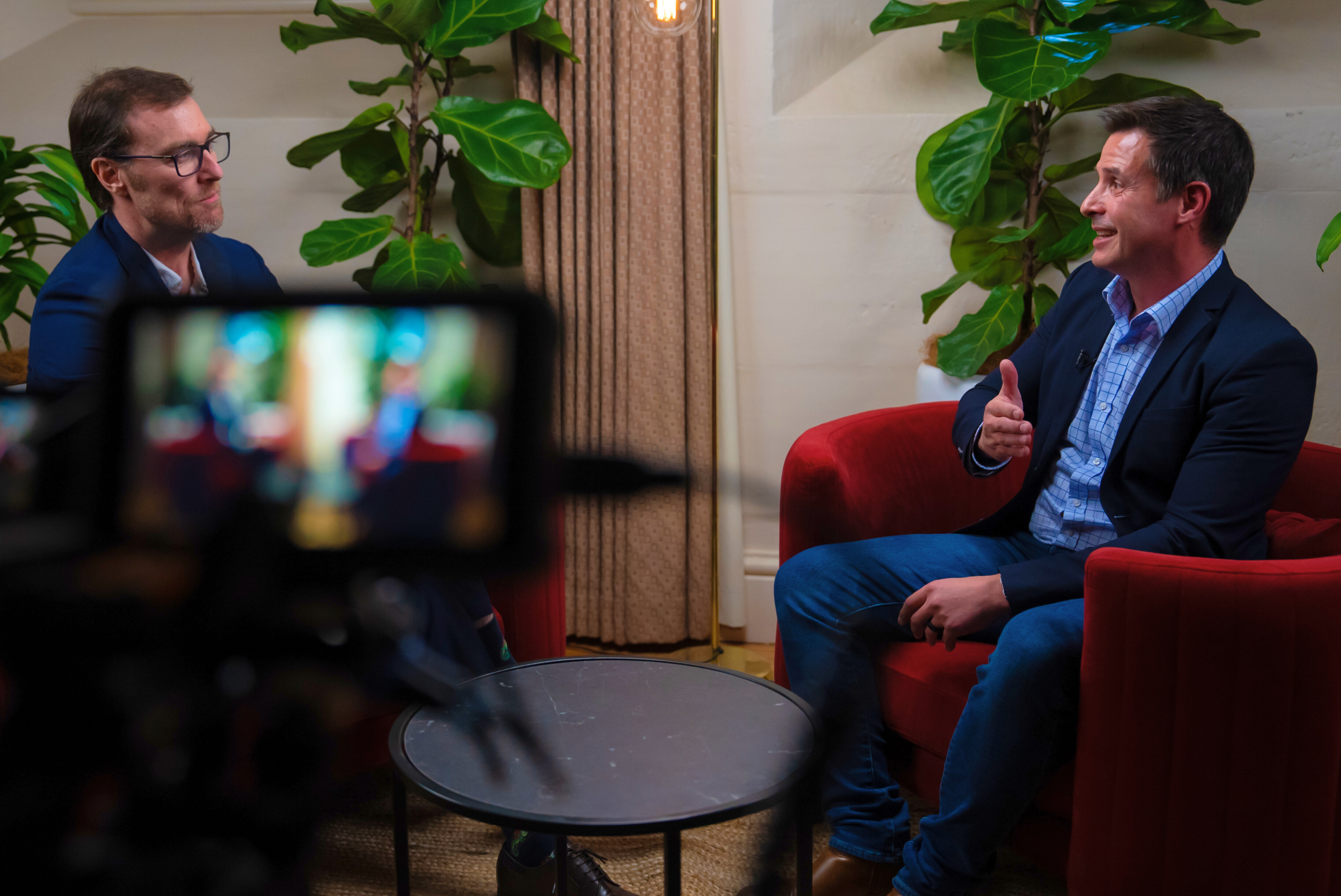ADAPT’s Senior Research Strategist Aparna Sundararajan chats with Humans Meet Digital’s Founder Jennifer Scott. As a popular speaker at ADAPT’s CIO Edge events, Scott is an international Senior Executive and leader in leveraging emerging digital technology. They discuss the evolution of customer experience with business and technology, companies doing it right, and barriers to technology adoption.
Aparna Sundararajan:
What are you seeing in terms of a trend that’s emerging in areas where businesses are more focussed on customers? And how is that experience going to change? What are you seeing?
Jennifer Scott:
What a great question. I’ve become really obsessed with fashion and furniture at the moment and I’m starting to observe a real deceleration in fast fashion. So, it was a 22 percent growth in 2008 and just 5 percent growth by 2016.
Aparna Sundararajan:
Wow, that’s a huge deceleration.
Jennifer Scott:
I think so. And the way I think about it is that your generation are really concerned about your environmental footprint and you really worry about what that means for society.
So, instead of having lots and lots of clothes that you don’t particularly like, there’s much more emphasis on quality.”
So, my hypothesis is that over time we will see people buying fewer, but lovelier clothes and fewer and lovelier furniture. So, right now Australian households discard 24 kilogrammes of furniture every year.
Aparna Sundararajan:
Wow, 24 kilogrammes, that’s a lot.
Jennifer Scott:
And you can start to see IKEA responding to that, so they will redeem your furniture and give you kind of, some kind of agreed price back. So, you’re starting to see the global giants respond to these trends and start to take them pretty seriously. And I think calling out this fewer, better clothing and furniture is a really important place to start. And how I think it will work its way through, is we will end up in a world of hyper-personalisation.
Aparna Sundararajan:
Okay.

Jennifer Scott:
So, you’re going to buy fewer things, they’re going to be really beautiful, you’re going to investigate them really thoroughly and you’re going to be very choiceful about what it is that you buy.”
I look at Nike making one-off trainers out of recycled parts.
And I think it’s starting to see the fringes of that kind of reusing culture. And I think we’re also starting to see the kind of re-rise of rented fashion. So, the rent a runway concept has been around for a while now and I think we’ll start to see a re-acceleration of that. And there’s a company here in Australia that are doing really well, a start up who are in that space as well.
Aparna Sundararajan:
In that sense then, what kind of technologies are going to help companies to do this, to achieve this, do you think?
Jennifer Scott:
The way I see it is that we’ll see a coming together of three really interesting technologies that are all emerging now. The first is artificial intelligence, which will start to curate what it is you might like.
Secondly, there’s augmented reality, which will help you visualise what your chosen purchase will either look like when you wear it, or look like in your home.”
And thirdly, 3D printing and the ability to scan your body will ensure that we get really great fit. And these technologies will start to come together, so you’ll have a well curated, tried and tested, beautiful thing that fits you fantastically well.
Aparna Sundararajan:
That’s interesting, because when we look at artificial intelligence and there’s a lot that’s been spoken about the potential of what it can do. Do you have any favourite companies that are doing it right, or you think are at least going in the right direction?
Jennifer Scott:
Well, sure, my favourite example and my moment of everyday is Pinterest. I think their ability to predict what I want to see is pretty amazing and artificial intelligence surrounding that kind of visual communication mechanism, they really look like the leaders in the world to me, from where I sit. And then there are other companies doing great things, both in fashion and in furniture. So, there’s a great, great company in the UK called Dresscipe, they’re partnering with John Lewis and many other fashion retailers and what they’re essentially doing is asking you some very basic questions, what colour are your eyes? How tall are you? What’s your body shape like broadly? And it’s keeping that information and then it is curating an email for you once a week, which essentially sends the kinds of fashion that you might like to wear for the week.
Aparna Sundararajan:
So, generally we spoke about curating the fashion and then using augmented reality, but then what happens to the fit, like, the basic try-on room, spending so much time there? Do you foresee a technology completely removing that off our minds?
Jennifer Scott:
How would you do that? So, thank you for asking. I’ve been working with this amazing start-up in Melbourne, called Custom Innovation Company and they have basically been fitting men with suits for some years, but because they’re design thinkers, they couldn’t help but solve the problem, how do you get fit without having to repeat visit the client and get the suit to fit?
So, they developed this amazing technology, where they’ve got an app that will scan your body and from that scan it will create a 3D model made out of essentially corn starch, so you’ll have a life-size mannequin of your body.”
Personally I can’t think of a faster way of getting me to the gym than seeing a life-size model of myself, but anyway. I think it’s a really good problem to solve. Right now E-commerce websites deal with 20 to 50 percent returns on fashion items, because people buy loads of things and then they find that they just have to return it, which creates waste and your generation and all of us should care a lot about waste and too much, too many carbon miles in delivering goods and sending them back again and so on. So, creating and investing time and money into generating fit, so that you are either scanned by an app that you do yourself, or you go somewhere and get scanned, or whatever and translating that into the production of goods. This hyper-personalisation should enable this to create a product, a dress, a shirt, a skirt that fits you absolutely perfectly.

Aparna Sundararajan:
Wow, that’s brilliant. And you said there’s a company that’s doing it right away?
Jennifer Scott:
Yes, so Custom Innovation Company have been working in Melbourne and doing a great job and I know there’s another start up here, in Sydney who do it as well. What’s interesting about Custom Innovation Company is that they’re getting great traction overseas and so they’re doing really well in Asia and they’re looking like they’re going to get some big deals signed. And yet here a little bit of traction with MIRA and we’re all certainly really interested in them. It’s just a shame that they can’t get a bit more traction here. And I hope that changes.
I hope that we start to really embrace these solutions and start to think about how we bring them into big organisations to create real change.”
We’re also seeing this in furniture as well, so Stylyze in Seattle and also Spruce Up, based in Seattle have raised 4.2 million in funding. They’re essentially curating 2,500 bits of furniture down into something that you are meaningfully going to look at. And I think that ability to curate based on some, just simple quiz questions that Spruce Up ask you, is a really great way of going from all of the furniture available in the world, down to a set of furniture that you might like. And again, really interesting example of artificial intelligence being used in the visual world. And the second phase of all of this is around augmented reality.
So, once you’ve had your fashion and your furniture curated in a much easier way, then there are tools like House and IKEA, which both allow you to see what your sofa will look like when you put it into your living room. Now, I get frustrated, because I want technology to come fast and to be brilliant, so unfortunately both of those technologies are good, but they’re not great yet. And I’m really looking forward to more companies investing further in augmented reality and just getting it better and better and better, so that it’s slicker and slicker and slicker. It’s interesting to see that architects are starting to use augmented reality, so when they’re designing buildings, they’re starting to be able to look at a kind of visualised model of what the new building will look like. And they can also use this technology with interior designers, so that they can basically interior design the entire building and show people what it will look like. So, this is a move from mood boards, which they’ll probably still use as part of the journey to actually being able to see the output of what the building will look like. I’m expecting to see this level of augmented reality in our fashion and in our furniture.
Aparna Sundararajan:
What do you see some of the barriers to that, is it at the adoption? Is it that adoption is slow? Or is it that the technology availability, or evolution in itself is taking time?
Jennifer Scott:
Here’s how I see that, I see the example as being about voice and our ability to speak to Alexa, or to Siri, or whoever you like to speak to. At first, when voice technology came out, it was about 75-80 percent accurate, which meant that one in five words were not correct and it’s kind of annoying speaking to something that’s correct only 80 percent of the time. And then it started to get better and better and it moved to 90 percent, where early adopters were happy to use voice and now we’re getting right up into the 98 percentile of correctness for voice. And I think this is the moment where you’re starting to see hyper-adoption of voice across people who are driving, across people who are busy, people who are dictating their notes into text. We’ve seen all sorts of uses in voice, in day-to-day activities, from watching The Block and watching the contestants turn their own lights on, which seems like kind of a trivial use, but we’re seeing voice adopted and adopted and adopted. So, what’s interesting about these technologies is that when augmented reality isn’t that great for IKEA, they probably sit at the back-end and look at the usage statistics and they’re probably a bit disappointed and what they should be doing is going back and making the tech better and better and better and making it so great, people really want to use it and so infallible, they should put their entire furniture content base onto that system and just make it much easier to use and to size.
So, I really challenge CIOs to pick something and go really hard and I know we live in an agile world and so it’s all about small drop releases and making things better and better incrementally, but until you’ve made something a really delightful customer experience, maybe we don’t want to bother and maybe it has to be delightful for us to really want to engage.”
Aparna Sundararajan:
That’s interesting. And how are you seeing the partnerships working for these companies that you’re working with? Are they global? Are they more based out of Australia? What’s happening? Are they working together as an ecosystem? Or do you still see there’s like, more competition?
Jennifer Scott:
Sure, I’m really interested in the development of partnerships and I see, I see actually globally media companies and telcos starting to work pretty closely together. Fascinating I think, to see Australian media outlets get together and fight really hard for press freedom and it was a really nice view of alliance in a tough industry and then secondly, in that same week, the media platforms have actually got together and rolled out a TV ad platform so that people who want to advertise on TV can do that all on one platform.
Now that’s a really significant investment and it’s such a great thing for them to do, because advertising in TV is a harder and tougher market, so good for them for getting together. I see it also in telcos around the world, I see their Freeview providers pooling their Freeview content onto single point apps and single point Set-Top boxes and so on, for instance in the UK, but also in the Netherlands and also in many other parts of Europe, so it’s really interesting to see collaboration within industry, particularly where the industry is having a tough time and I also see it where technology solutions are starting to provide big point solutions, like Dresscipe, who have this great like this is curated fashion for you and they’re working in partnership with John Lewis, who sell all of that fashion and who have a use for that curated fashion, so it feels much more like this ability for smart startups to create great solutions and business to work with it.
I love that and I think it’s a really great way to get into agility and for CIOs not necessarily to have to build everything themselves, so if a CIO can build it himself, then what a great thing to do. If you partner with somebody who’s already got a great solution, what a great thing to do as well and I think we’ll start to see a much more partnership-lead world in the future.
 Watch
13:52
Watch
13:52




























